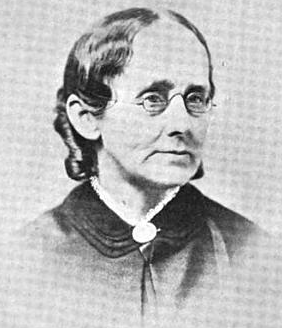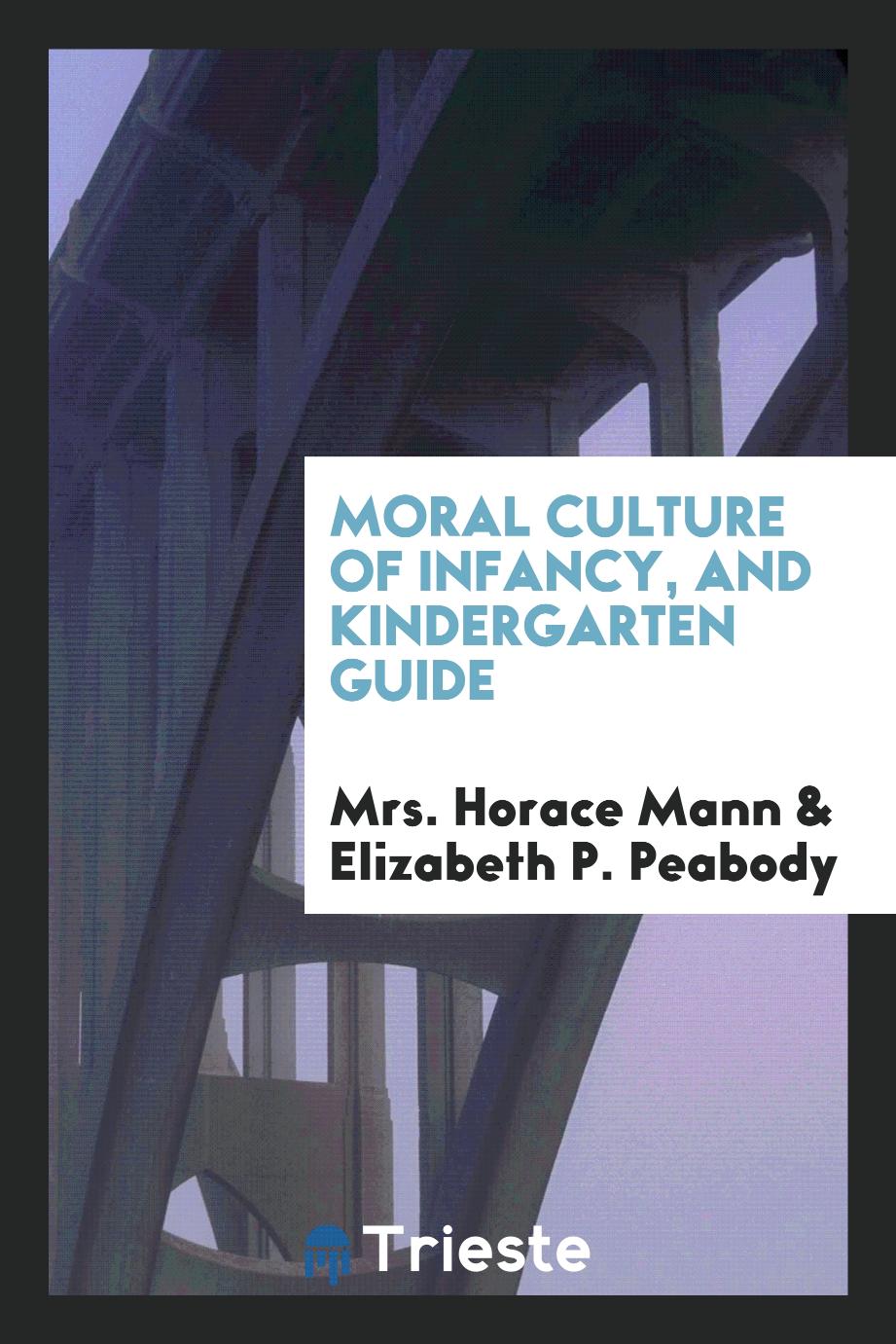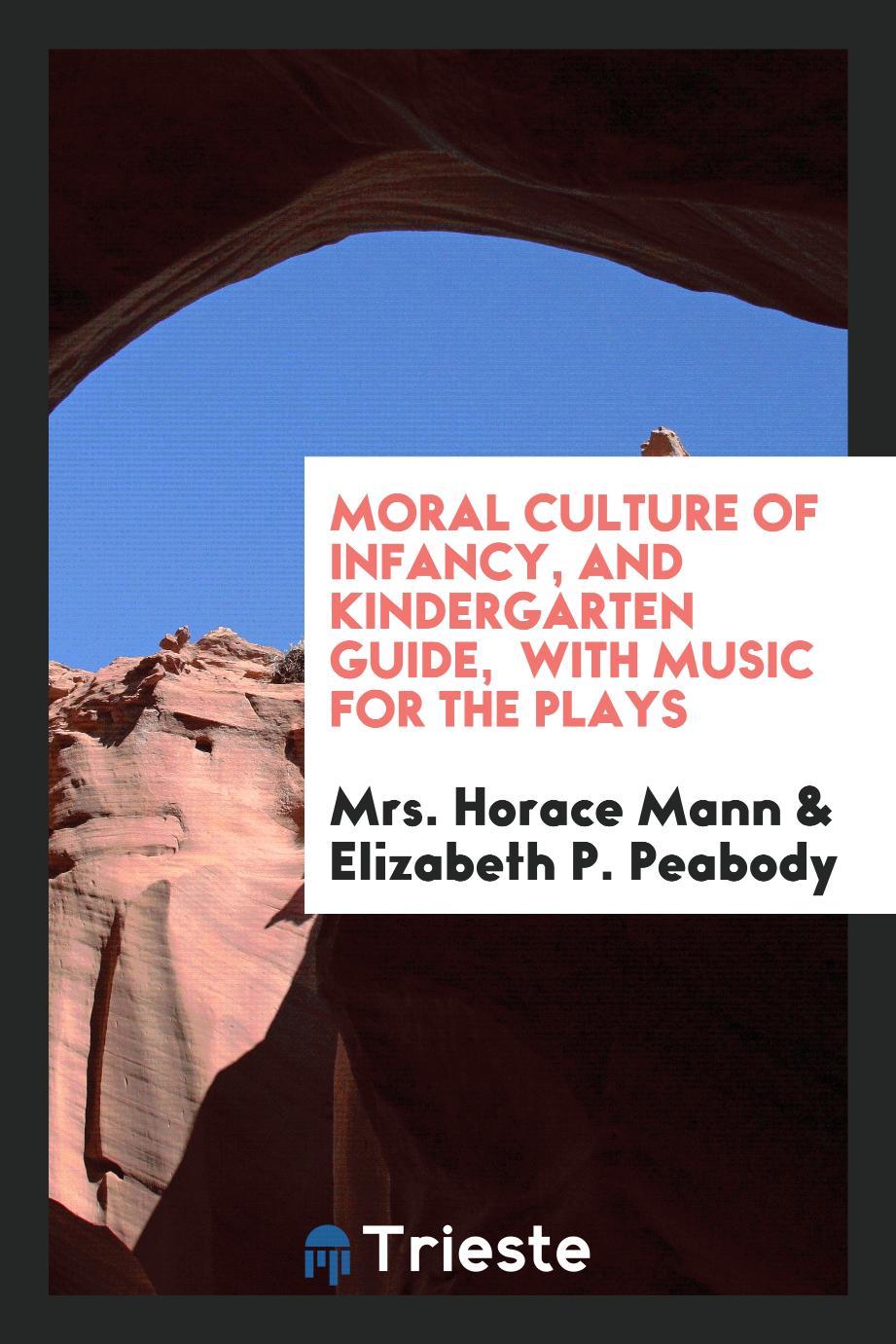
Mrs. Horace Mann
Mary Tyler Peabody Mann (November 16, 1806, in Cambridgeport, Massachusetts - February 11, 1887, in Jamaica Plain, Massachusetts) was a teacher, author, mother, and wife of Horace Mann, American education reformer and politician. Mary Tyler Peabody Mann was the daughter of Natheniel and Elizabeth Palmer Peabody. Her sisters were Elizabeth Peabody, reformer, educator, and pioneer in establishing kindergarten, and Sophia Peabody Hawthorne, painter and wife of Nathaniel Hawthorne. Her three brothers, Nathaniel Cranch Peabody, George Francis Peabody, and Wellington Peabody did not achieve the fame of the sisters. Mary Peabody, her sisters, and her brothers grew up in genteel poverty. Nathaniel and Elizabeth Peabody had been schoolteachers when they married; after the nuptials, the couple set aside a parlor in their house as a schoolroom. Mrs. Peabody urged her husband to become a doctor. He became a dentist, who preferred to experiment, write tracts on the care of teeth, and test herbal remedies to attending patients. As a result, his wife's teaching salary became the main financial support of the family. Growing up in Salem, Massachusetts, Mary Peabody left home at eighteen to teach school in Maine. She moved to Boston to assist her sister Elizabeth in the operation of a school for young children; in their mid-twenties, Elizabeth and Mary moved into a boardinghouse. The home of Rebecca Clarke, the mother of James Freeman Clarke, also became Horace Mann's residence in 1833. Later that year, Mary accompanied her sickly younger sister Sophia to Cuba; Elizabeth Peabody and Horace Mann shared a sibling-like closeness and intellectual compatibility that flourished in Mary's absence. While in Cuba, Mary worked as a governess to a Cuban family. The letters she exchanged with Elizabeth contained numerous references to Horace Mann. Returning to Boston in spring 1835, Mary moved in with her brother George and found employment tutoring students in Italian. After a short interlude of substituting for Elizabeth at Amos Bronson Alcott’s experimental Temple School, Mary returned to Salem, where she established a successful school for little children in her home and began to write educational works for children and parents. Meanwhile, in 1837 Mann was appointed secretary to the Massachusetts board of education and Mary devoted a great deal of time acting as the underpaid statesman's secretary and assistant. Although the board of education's powers were limited, Mann, with Mary's assistance, shaped public opinion regarding school problems and created public support for increasing the pay of teachers and improving their training through the founding of state normal, or teacher-training, schools. In addition to teaching and helping Horace Mann, Mary found time to write. Her children's book, The Flower People: Being an Account of the Flowers by Themselves; Illustrated with Plates, was published in 1838. The horticultural guide, a collection of tales about a little girl named Mary who makes the acquaintance, one by one, of common garden plants. These imaginary conversations with crocuses, violets, anemones, and geraniums, proved popular with both children and their parents. Most biographers agree that Mary was smitten with Horace Mann from the first meeting. In contrast, Mann, grieving over the death of his first wife and financially responsible for his only brother's debts, did not reveal amorous sentiments for Mary for close to a decade. On the first of May, 1843, Horace Mann married Mary Peabody (age 36 years) at the Peabody home in Boston at 11:30 a.m.; at 12:30 p.m. the newlyweds set sail on the Hibernia for Europe.

